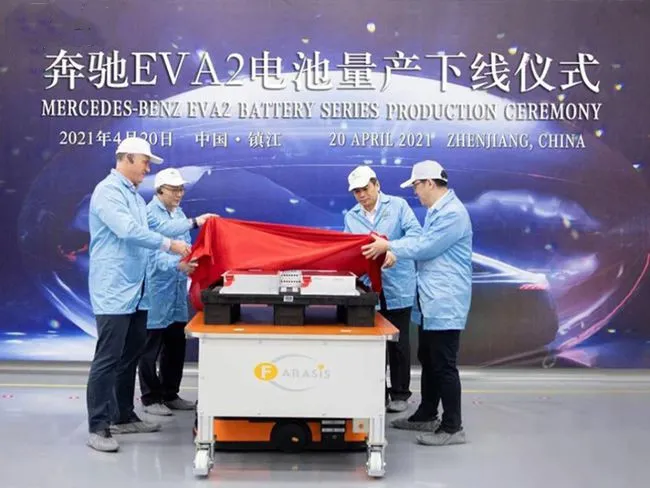Author: Huangshan
“According to the equity incentive goal, Funeng Technology will strive to achieve a revenue target of 3 billion this year. We are confident that we can achieve it,” said Zhang Feng, the secretary of the board of directors of Funeng Technology. In the semi-annual report of Funeng Technology this year, the company’s operating income was 877 million yuan, and the installed capacity was 0.78 GWh. This means that Funeng Technology needs to achieve at least 2.2 GWh of installed capacity in the second half of the year to achieve its goal, three times as much as the first half of the year.
On September 3, Funeng Technology and Tsinghua University signed a strategic cooperation agreement at the Zhenjiang factory to carry out multi-topic cooperation in the field of battery safety. In the subsequent factory tour, “Electric Vehicle Observer” saw that the production line was busy and highly automated.

According to Zhang Feng, the total production capacity of the Zhenjiang factory is 24 GWh, which is divided into three phases of construction, each phase with 8 GWh. Currently, the first phase is climbing in production and is expected to be completed in Q4. The second phase is expected to start production at the end of this year and reach production by the end of next year. The third phase will be put into operation in the year after.
Industrial park employees include many foreigners, according to Funeng staff. These are all Daimler employees who have moved in. In November 2018, Funeng Technology signed a power battery supply contract with Daimler for 2021-2027, with a total scale of 140 GWh.
Not only that, when Funeng Technology went public on July 17, 2020, it raised 3.2 billion yuan and introduced Daimler as a strategic shareholder in the IPO.
In the 2021 interim report, Daimler is still Funeng Technology’s fifth largest shareholder, with Daimler Greater China Investment Co., Ltd. holding 32.12 million shares, accounting for 3%.
Not only is Daimler the largest customer, but it is also one of the shareholders. The relationship between Funeng Technology and Daimler is closer than that between BMW and CATL in the past.
In April of this year, the Mercedes-Benz EVA platform battery began mass production at the Zhenjiang factory. As the new exclusive electric vehicle platform for Daimler-Mercedes-Benz, the EVA platform will be used in four models, including the newly launched EQS this year, as well as EQE, EQS SUV, and EQE SUV. The EQS will be equipped with Funeng Technology’s battery.
 “Currently, our production capacity is still insufficient. We have already started shipping 285Wh/kg batteries to Daimler. Currently, our production line upgrade in Ganzhou with a capacity of 1.5GWh, plus Phase 1 of 8GWh in Zhenjiang, is all we have. Increasing our production capacity is our top priority,” said Zhang Feng.
“Currently, our production capacity is still insufficient. We have already started shipping 285Wh/kg batteries to Daimler. Currently, our production line upgrade in Ganzhou with a capacity of 1.5GWh, plus Phase 1 of 8GWh in Zhenjiang, is all we have. Increasing our production capacity is our top priority,” said Zhang Feng.
To ensure production capacity, Funeng Technology has signed long-term supply agreements with major suppliers such as Capchem, Shanshan Co., Ltd., and Xinyuan Technology.
This year, as sales of new energy vehicles continue to soar, the supply and demand imbalance in the entire power battery industry chain is reflected, mainly in: 1. soaring raw material prices; 2. severe shortage of high-quality power battery production capacity; 3. various power battery companies are investing and expanding production.
Therefore, for each battery company, ensuring the supply of raw materials to maintain production capacity and protecting key customers is crucial, even resulting in supply shortages and waiting lists for main automakers.
However, not all customers are high-quality customers, and battery companies must make judgments and choices.
It is clear that Daimler is currently the biggest customer that Funeng Technology must seize, so ensuring production capacity and quality may make Funeng Technology the next “CATL”.
In addition, Funeng Technology has also cooperated with GAC, Great Wall, Geely, and Wuling, and its next-generation 330Wh/kg battery received a $4.1 million technical development contract from the U.S. Advanced Battery Consortium (“USABC”) in May. Samples have been sent to many companies and received good feedback. According to battery development management, “EV Observer” predicts that the next generation of 330Wh/kg batteries will be mass-produced within the next 3-4 years.
This article is a translation by ChatGPT of a Chinese report from 42HOW. If you have any questions about it, please email bd@42how.com.